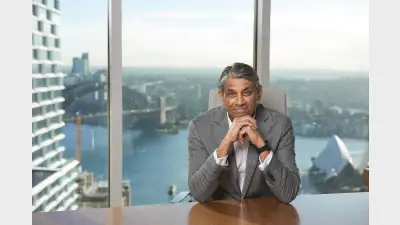Diversifying away geopolitical tension



With the more complex global economic outlook on the short and long-term horizon, it is now a good time to put multi-asset strategies in place, fund managers are saying.
One of the advantages of these strategies in uncertain times, according to managers, is they can help investors diversify and mitigate market volatility.
However, investors will need to be more careful when selecting a suitable multi-asset strategy given that traditional defensive asset classes, such as bonds, are becoming less effective at shielding portfolios in light of inflationary pressures and given the prospect of rising interest rates.
“We recommend an approach that invests across assets with a variety of return sources. In other words, one that is not reliant on any single driver of return,” Irene Goh, head of multi-asset solutions, Asia Pacific, at abrdn, said.
“We explore an investment universe beyond equities and bonds, and include alternative asset classes such as listed alternatives, infrastructure, real estate, student housing and healthcare royalties. What drives their revenues is different to what drives more traditional assets.”
Goh said she believed in investing actively to capture short-term market inefficiencies and dislocations and rotating through regional, sector, style and thematic allocation.
“To the extent possible, we pick stocks and bonds with strong fundamentals and supportive valuations depending on where we are in the business cycle – be it expansion, slowdown, recession or recovery – to avoid biases tied to market-cap-weighted passive indices.”
For Thomas Poullaouec, head of multi-asset solutions APAC at T. Rowe Price, the benefits of these strategies during an uncertain market environment were twofold. He stressed that multi-asset strategies were not one single category but they also varied in terms of risk/return profile depending on the investment approach and the objectives.
“Each investor can choose a multi-asset strategy that is in line with her/his own risk tolerance, in between growth and defensive risk profiles,” he said.
“Multi-asset strategies can be dynamic in the asset allocation process. This means that investors are delegating the asset allocation decisions on when to buy or sell an asset class to a professional investor.”
Clifton Hill, portfolio manager multi-asset/macro at Acadian Asset Management, said that one of the reasons to have a multi-asset strategy in place at the moment was the current situation with central banks and hiking interest rates.
“We have a situation where the central bank can’t react to a downturn, or shock, or recession, as the inflation is elevated.”
This would mean, he said, that as a result, the equities and bonds in this environment, were proving to be to be difficult.
“What multi-asset [strategy] is able to do is to take advantage of all the parts of this difficult challenging and complex situation,” he said.
Mike Ponikiewicz, Acadian’s portfolio manager, commodities, stressed the importance of diversification, which was not limited to only asset classes and the different regions.
“In this case, some asset classes like commodities, they can hedge the other asset classes very well because of the supply-side shock issue.”
He said that when there was a lot of uncertainty and geopolitical risks, diversification was one way to help investors not to be positioned in just one asset class and that was currently a huge advantage.
MARKET RISKS
However, Goh admitted there was a number of major risks that currently did exist and they applied to the multi-asset strategies.
According to her, these included central bank policy withdrawal at a time of heightened macro uncertainty, persistently high inflationary pressures and a further downside to global growth.
Separately, she also mentioned a potential sharp market rebound in the event of geopolitical resolution or a decisive breakthrough in the fight against COVID-19 that would allow major economies such as China to reopen.
“Actively-managed strategies comprising assets that benefit from multiple sources of return will be best positioned to capture investment opportunities while offering some protection against these key market risks,” she said.
“As mentioned, investors can also use options strategies to profit from rising volatility, while certain alternative assets offer more resilient cashflows and so a degree of protection against recession.
“In the event of a sharp rebound, active managers who have experience of re-risking dynamically will be best placed to handle this, in our view,” she stressed.
rising INFLATION
Goh said that a major disruption to supply chains and cost inflation would remain persistent headwinds to the smooth functioning of the global economy.
Asked about the impact of rising inflation on strategies, she said: “For companies, what has become critically important is pricing power, or the ability to raise prices to compensate for rising costs without damaging their customer base. As things stand, most companies are forecasting being able to pass on some of the cost pressures.
“Certainly, there are reasons to feel optimistic as the world adapts to the Omicron variant and strives to return to ‘normal’. Then again, the Russia-Ukraine conflict has amplified existing challenges facing the global economy, specifically elevated rates of inflation along with the risks that the Federal Reserve ‘kills the cycle’ as it attempts to manage supply-demand imbalances and guide inflation back to target.
“All managers making investment and portfolio construction decisions will need to grapple with how to manage these risks in the year ahead,” Goh added.
“In our multi-asset strategies, given the uncertainty on when the Russia-Ukraine conflict will peak and when it will end, and on when the supply chain constraints will ease up, the threat of inflation on the impact of portfolio returns should not be ignored. In a diversified multi-asset approach, we recommend allocations to inflation linkers and exposures to commodity producers.”
Poullaouec was of a similar opinion and said that a list of market risks “was unfortunately a long one” and ranged from the geopolitical risks in Ukraine, China’s slowing growth, fading stimulus and central bank tightening.
“At the crossroad of all these risks, the inflation risk was paramount. I believe that this is the major risks to watch for any investors, especially for retirees given how inflation can detract purchasing power over time,” he warned.
“Multi-asset strategies should invest in inflation sensitive assets which can protect against inflation over the long term. T. Rowe Price multi-asset research has found that a mix of commodities (mining, energy, and utilities) and real estate companies, blended together as ‘Real Assets Equities’, exhibit similar—and in most cases, superior—inflation sensitivities to traditional inflation-linked bonds.
“This research has found that Real Assets Equities respond more favorably to periods of high or rising inflation than the broad equity market where returns are relatively weak, at the cost of less favorable returns during periods of low or falling inflation where broad equity returns are relatively strong.”
Poullaouec also stressed that the inflation risk also diminished the diversification benefits of traditional fixed income strategies in a multi-asset portfolio. Therefore, multi-asset strategies should look at including alternative strategies, like unconstrained fixed income strategies or hedge funds, or at alternative techniques, like tail risk, dynamic allocation strategies to protect the portfolio from the dominant equity risk.
“This can substitute a portion of the traditional bonds which may generate poor returns in a rising yield environment. In short, multi-asset strategies have a rich toolkit to pick from in order to better navigate the current environment.”
CHINA
Next to the inflation balance and geopolitical risks, where the war in Ukraine took the main stage, the markets were closing watching China as well.
“The second most important thing is China as it continues its regulatory crackdown and that will make it very difficult in terms of the emerging markets,” Hill said.
He said that contrary to the previous years when the markets saw a massive stimulus from China, this time around China was taking a very different direction.
“They are trying the more targeted stimulus and to shift their economy more around consumption driven and less export driven. That in itself will create problems for the equities market in China and, in broader Asia, it will create problems for emerging markets that benefitted from Chinese consumption and that will have a bigger effect on the global growth.”
ASSET CLASSES
Asked about what asset classes his portfolio was currently underweight, Poullaouec said that he remained underweight equities given moderating growth and earnings outlook amid an active Fed and inflation concerns, but within fixed income, he remained overweight cash as longer rates remain biased higher.
“Within equities, we trimmed our overweight to US and global ex-US value stocks and shifted into core equities, and took profits following a period of strong outperformance by value stocks.
“Within our fixed income allocation, we continue to favour shorter duration and higher yielding sectors through overweights to short-term TIPS [Treasury Inflation-Protected Securities], floating rate loans, and high yield bonds supported by our still constructive outlook on fundamentals, while keeping a cautious eye on liquidity amid higher volatility.”
Goh said she was also underweight government bonds and investment grade credit due to low yields and the prospect of rising rates.
Recommended for you
Private wealth firm Escala Partners is seeking to become a leading player in the Australian advice landscape, helped by backing from US player Focus Financial.
In this new series in partnership with MFS Investment Management, delve into all things fixed income and discover how you can use the asset class to build better client portfolios. In this Q&A discussion, MFS managing director- head of wholesale distribution James Langlands sits down with Evidentia senior asset consultant Ron Mehmet to discuss fund selection.
ETF providers are considering the phase-out of bank hybrids in their product development plans with billions of fixed-income assets set to seek a new home in the coming years.
Bell Financial Group co-CEO Arnie Selvarajah believes regulation will make the provision of episodic advice easier for consumers and is pivoting the business over the next two years to focus on wealth management.











